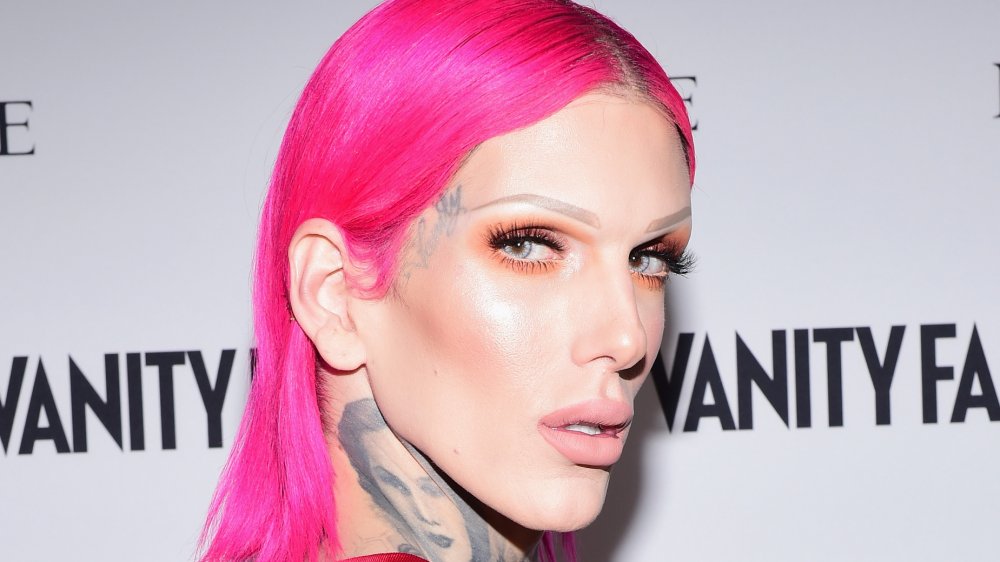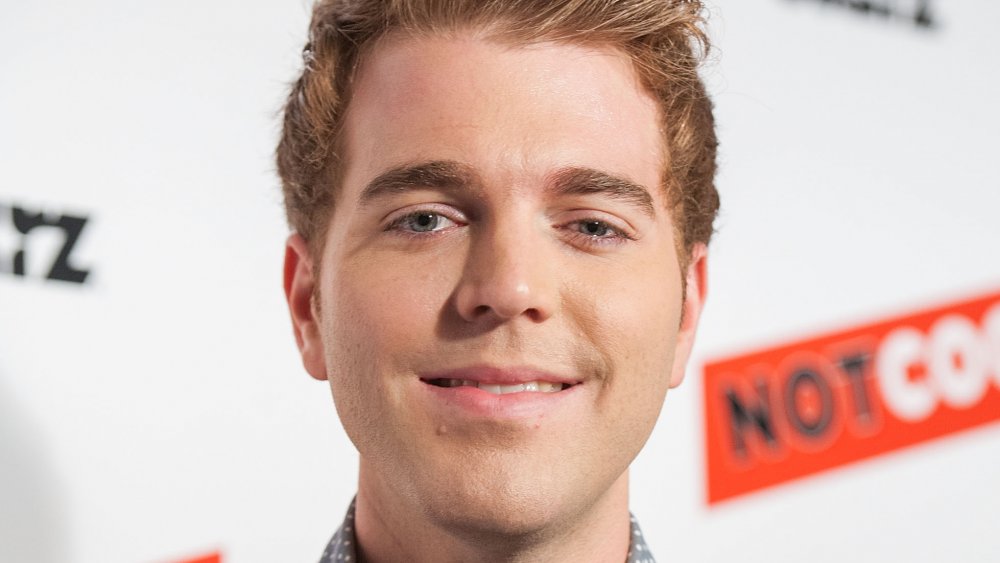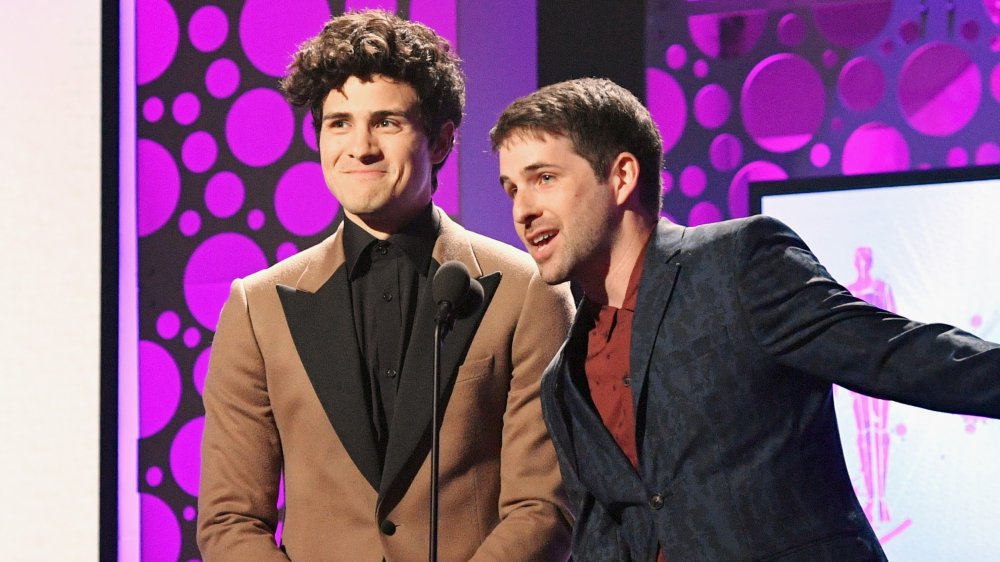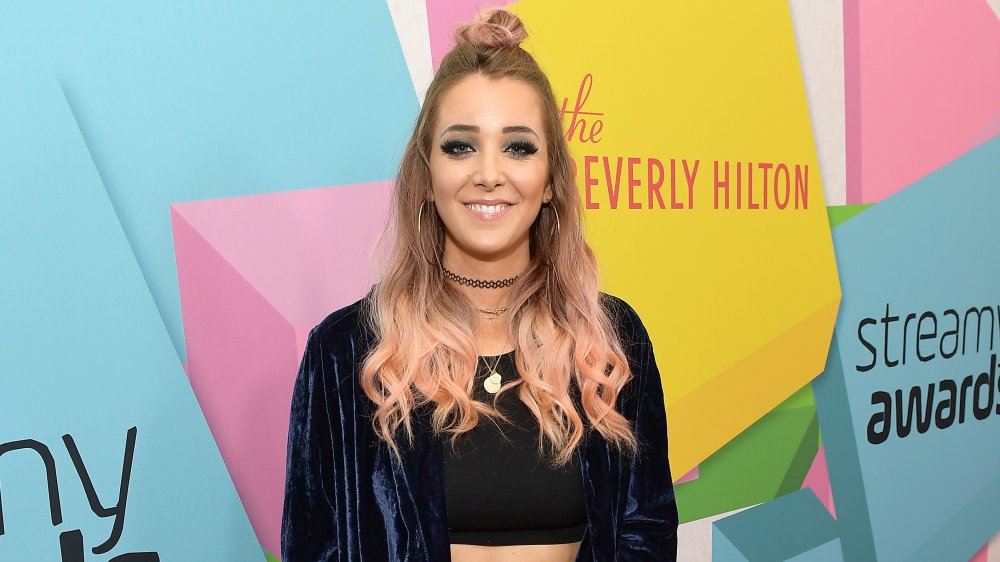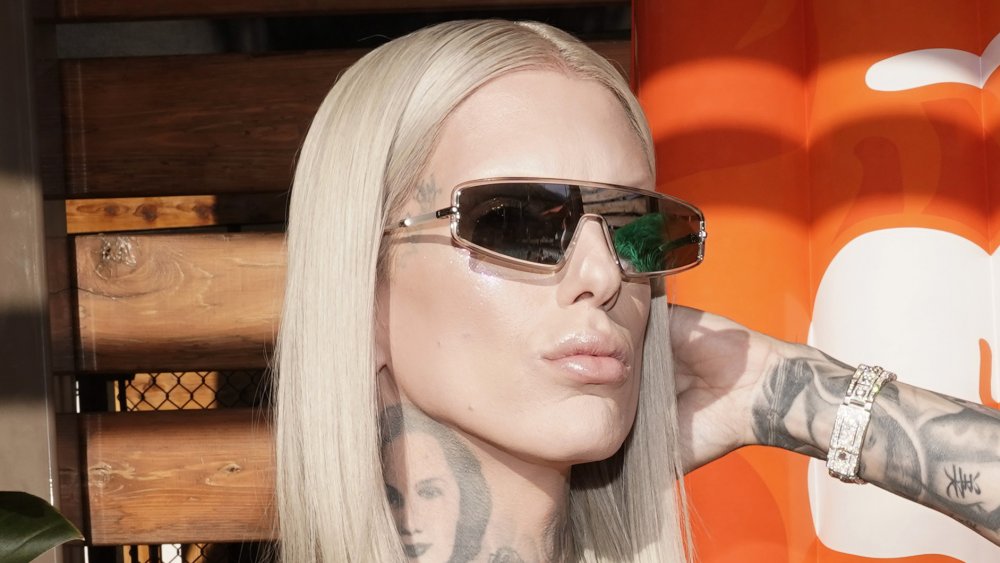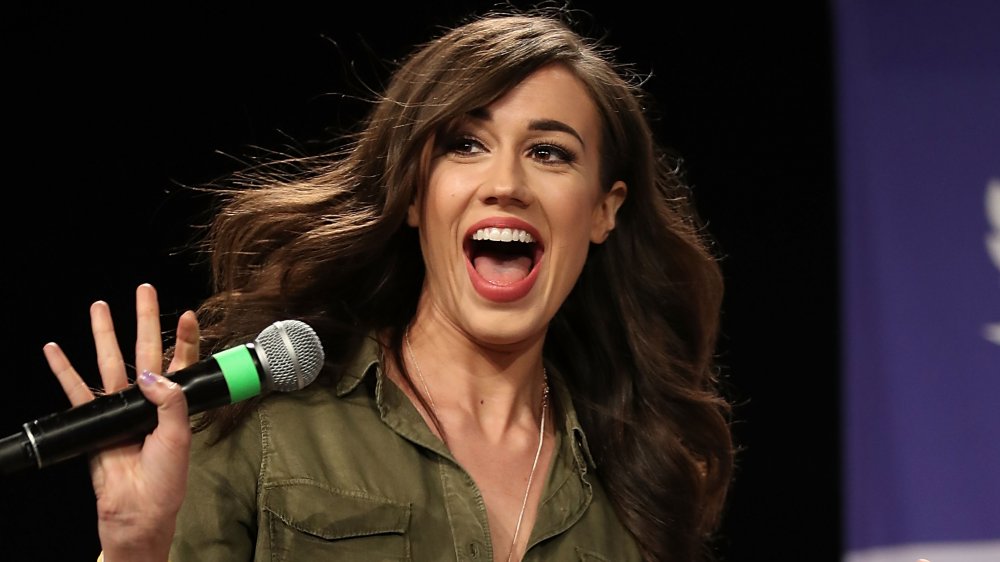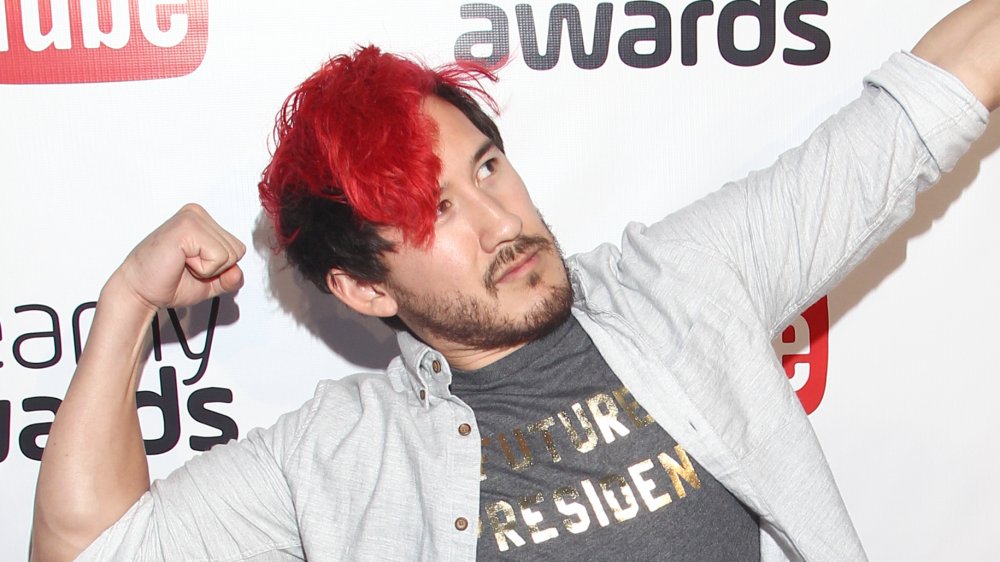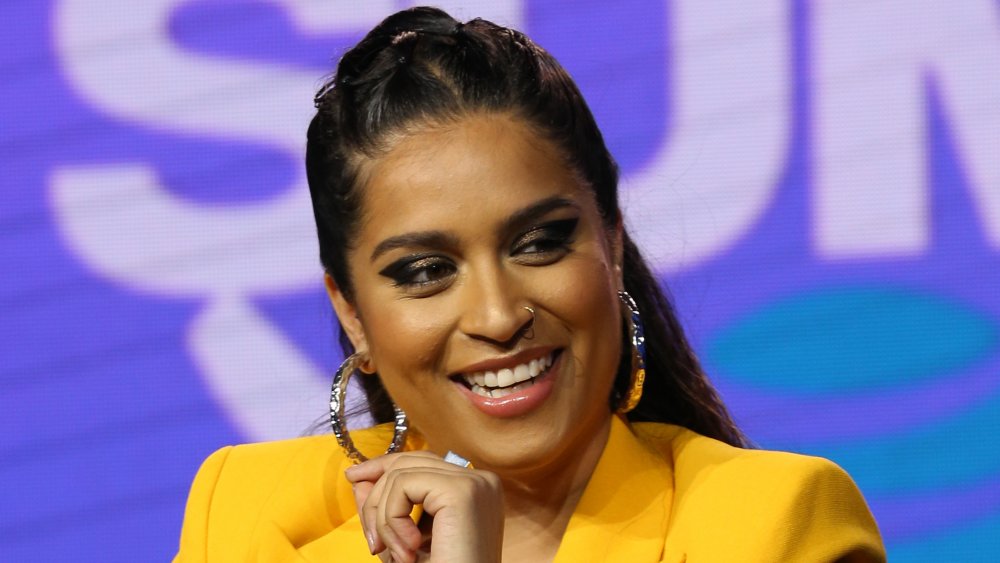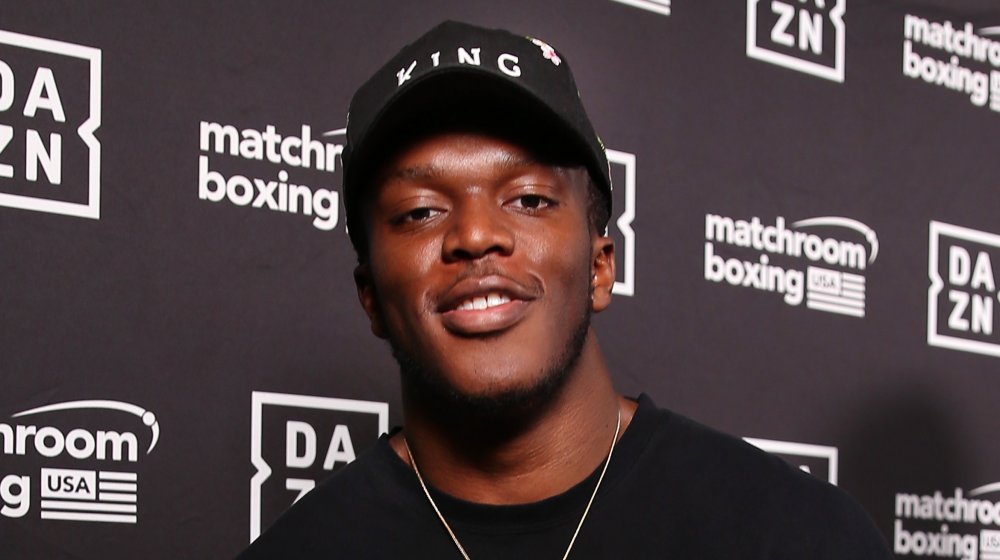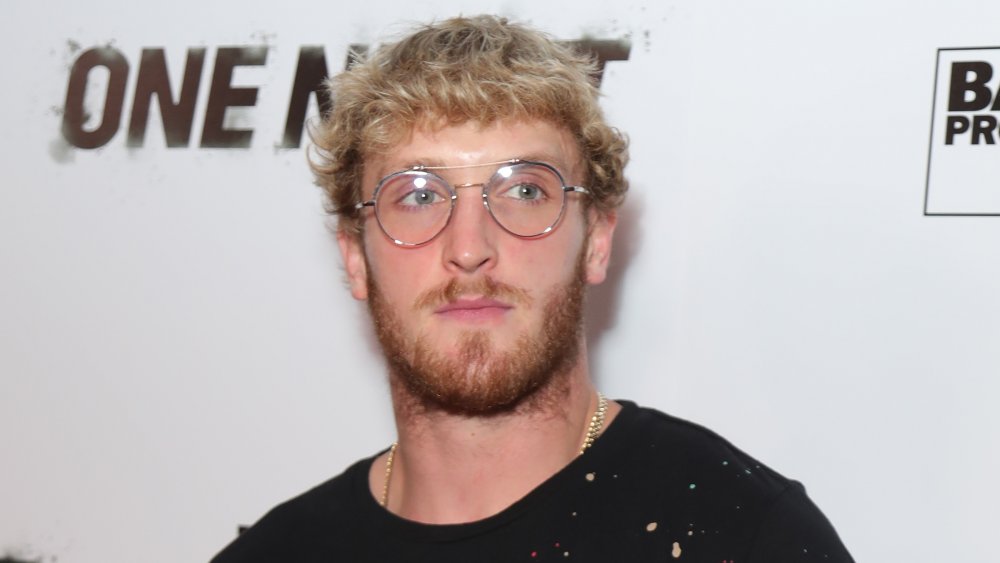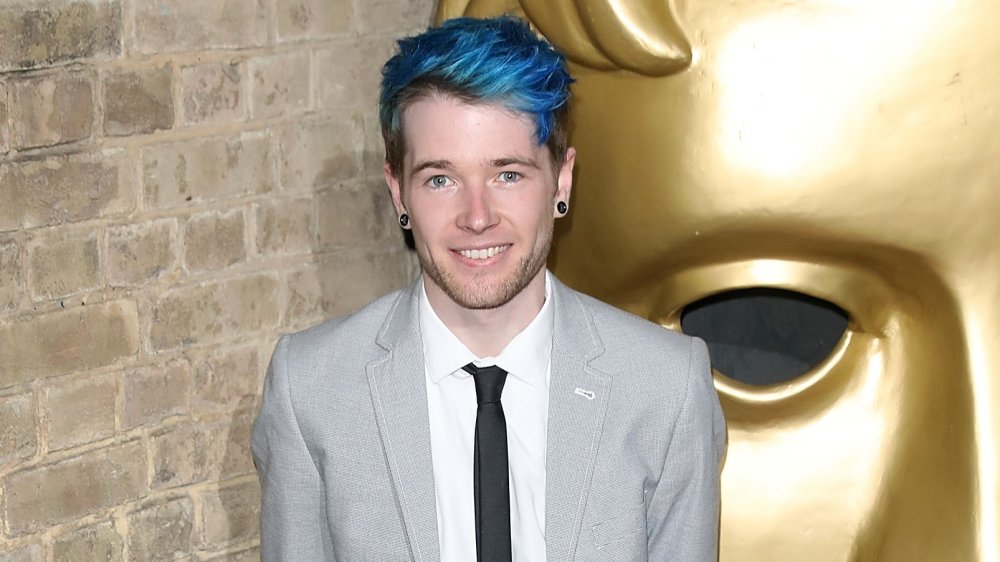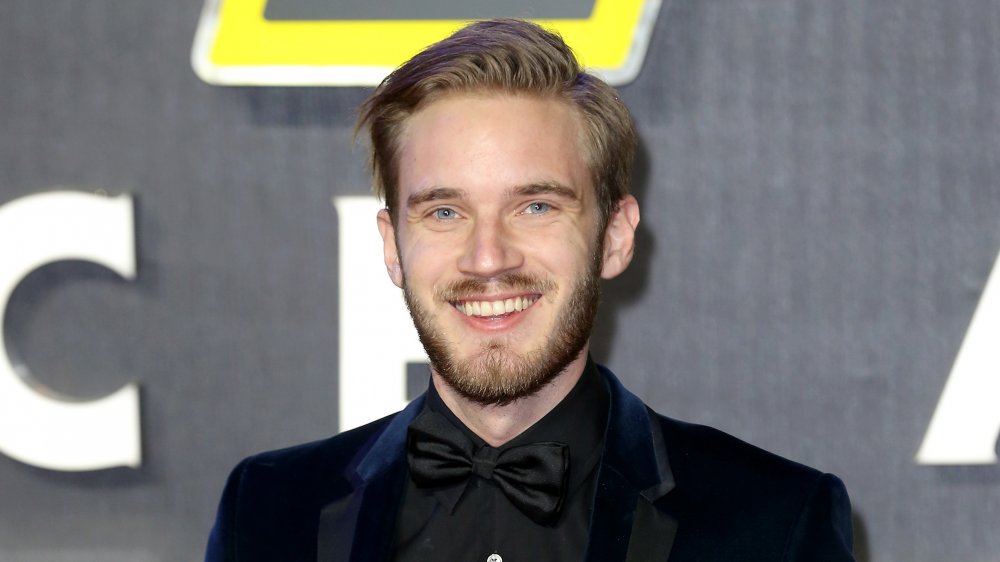The Biggest YouTube Stars Of The Past Decade
Big changes were just around the corner when YouTube celebrated its fifth birthday in 2010. It wasn't the giant that it is today, but the company had come a long way since it set up its first headquarters above a California pizzeria back in February 2005. The video-sharing platform grew at a rapid rate in those early years and its potential didn't go unnoticed by Google, which snapped YouTube up for $1.65 billion the following year. It continued to expand under Google's stewardship and was attracting two billion daily views by 2010, which is when the YouTube that we know today began to take shape.
2010 saw the introduction of new types of ads and people started making real money on YouTube for the first time. A number of social media stars emerged in the decade that followed, and while some of them are still at the top of their game, others have fallen by the wayside. While we're paying tribute to all of them, let's take a look back at the biggest YouTube stars of the past decade.
Shane Dawson was YouTube's comeback kid
YouTube veteran Shane Dawson was working as a security guard at an aquarium in Long Beach, Calif. when his YouTube career first took off. Dawson (who started actively uploading to YouTube in 2008 at the age of 19) had been creating his own video content since childhood, and his experience made him stand out from his peers at the time. "I started getting more views," he told Forbes in 2017. "Like 10,000, then 20,000, then when it got to 50,000 YouTube contacted me to become part of their partnership program, which was new at the time. It slowly became my job."
Dawson (real name Shane Yaw) was named Best Vlogger at the 2010 Streamy Awards, and the decade that followed was a real roller coaster ride. His edgy brand of comedy led to several controversies, but every time he looked as though he was down and out, Dawson bounced back. In 2018, he reinvented his channel and started making documentary-style videos about other YouTube stars, interviewing and analyzing the likes of Jake Paul and Jeffree Star. This hugely popular series of videos (Polygon called them "YouTube's Game of Thrones") catapulted Dawson back to YouTube's A-list, where he's been sitting comfortably ever since. YouTube's comeback kid had a net worth of approximately $12 million by 2019.
Anthony Padilla and Ian Hecox co-founded Smosh
Anthony Padilla and Ian Hecox started posting funny videos to YouTube way back in 2005, when the platform was still in its infancy. As YouTube grew, so did Smosh, the name Padilla and Hecox (best friends since grade school) decided to go by. They found success almost immediately — one of their earliest videos, a lip sync to the Pokemon theme song, was viewed about 24 million times before it got hit with a copyright strike. The video was removed, but it was up long enough to make Smosh one of YouTube's first household names. They held the top spot in 2006 and again in 2008, but by the time 2010 came around, Smosh was falling down the YouTube rankings.
Padilla and Hecox were in danger of becoming an early footnote in YouTube history, but the boys mounted a comeback. The madcap duo's tween-friendly brand of comedy continued to bring in new subscribers, and by 2013, Smosh was YouTube's most-subscribed channel again. Smosh: The Movie was announced the following year, and Padilla and Hecox were both tapped to voice characters in 2016's The Angry Birds Movie.
Padilla left Smosh to concentrate on his own content in 2017, despite the fact that it was still making millions. Meanwhile, Hecox and the Smosh Squad continued to churn out sketches following Padilla's departure, and Smosh ended the decade with nearly 25 million subscribers on its main channel.
Jenna Marbles has a waxwork at Madame Tussauds
In 2010, Jenna Marbles (real name Jenna Nicole Mourey) was working a number of part-time jobs to make her $800 rent. She spent her days in a tanning salon and moonlighted as a bartender and go-go dancer, according to The New York Times. "My life was a hot, hot, hot mess," Marbles told the newspaper in 2013, by which point she was doing considerably better and living in a $1.1 million Santa Monica, Calif. townhouse. Marbles had already exceeded a billion total YouTube views at that stage, making her the undisputed queen of the platform.
Her disarming tutorials and offbeat sense of humor had turned her into an online sensation, and Marbles would blaze a trail for funny female vloggers in the coming years. At the mid-point of the decade, she became the first social media star to be immortalised by Madame Tussauds, which unveiled a selfie-taking waxwork of Marbles at its New York location in 2015. Her foray into film production may not have ended well (The Hollywood Reporter called the 2016 YA flick Maximum Ride an "instantly forgettable affair"), but Marbles has remained a huge YouTube star. She hit 20 million subscribers in October 2019, a milestone she celebrated by taking a nap.
Ray William Johnson brought viral YouTube videos to the fore
Ray William Johnson got hooked on YouTube when he was an undergraduate at Columbia. He started watching videos during study breaks and spotted a gap in the market — there were plenty of vlogs and lots of hilarious clips, but nothing that combined the two. To address that, Johnson created the show Equals Three, in which he discussed the latest viral videos. "[I] uploaded the episodes twice weekly, and two years later Forbes is contacting me for an interview," he told the media outlet in 2011, the year his channel became the most-subscribed on YouTube. "So much for law school."
Equals Three became the biggest web series on YouTube over the next few years, which made the creator's next decision a real shock. Even though it was still pulling in millions of views per episode, Johnson quit Equals Three in 2014, signaling what The Daily Dot called "the end of an internet era." It was certainly the beginning of the end for the show (viewership dropped when Johnson ditched), however the man who made it wasn't ready to fade away.
Johnson made his acting debut in the 2016 indie film Who's Driving Doug, and in 2018, he reinvented himself as a rapper under the name Fat Damon. Neither movies nor music paid off, but Johnson had already done enough to be remembered as one of the biggest YouTube stars of the 2010s.
Jeffree Star built an empire
Jeffree Star had a brief career in music before he became YouTube's most prominent beauty guru. The freelance makeup artist saw an encouraging response when he uploaded some of his material to MySpace in 2007, so he decided to pursue music professionally, according to Cosmopolitan. Star's 2009 album Beauty Killer led to him being signed by Akon, but a second album never materialized and their deal came to an end in 2013. In a make-or-break move, he invested his life savings into a batch of lipstick — and Jeffree Star Cosmetics was born.
By 2018, Star's cosmetics company was selling $100 million worth of makeup a year, but it wouldn't have been such a monumental success were it not for YouTube. Star grew his brand quickly using his channel (he amassed 400 million views in the 18 months following his first makeup tutorial video in 2015), and the many feuds he's had over the years have only made him more famous: He's locked horns with former friend Kat Von D and members of the Kardashian-Jenner clan since hitting the big time.
Drama equals views, and views equal money. Star pocketed a cool $18 million in 2018, according to Forbes, making him the fifth-highest-earning YouTuber on the planet. It wasn't all from YouTube and makeup, either. "I own investment properties around the world," Jeffree Star, who has a stunning net worth, revealed on The Secret World of Jeffree Star, adding, "I have about 10 businesses that I'm currently running besides my brand."
Colleen Ballinger brought Miranda Sings to life
Colleen Ballinger created Miranda Sings to parody all the fame-hungry singers that started showing up on YouTube when the platform became more widely known. She got a lot of hate from people who didn't realize she was playing a character when she first started out, something she actively encouraged. "Nine or 10 years ago, bullying online hadn't been explored much," she told The Guardian in 2016, the year she broke into the top-ten highest-earning YouTubers list. "I was fascinated by these people who spent all day just sitting and hating on the internet."
Ballinger started to make videos about her anonymous critics in full Miranda character, giving birth to the phrase, "Haters back off," which would eventually become the title of her Netflix series. Released in 2016, Haters Back Off allowed Ballinger to expand on a character that had become a part of YouTube culture over the first half of the decade. "Now I can show a vulnerable side of Miranda, who is very real for me," Ballinger told Elle at the time.
The show divided critics and Netflix canceled it after two seasons, but the streaming giant re-teamed with Ballinger in 2019 for Miranda Sings Live... Your Welcome. The veteran YouTuber had over 10 million subscribers by December 2019, and if estimates about how much she's really worth are correct, she pocketed over $30 million this past decade.
Mark Fischbach went global with YouTube fame
Hawaii native Mark Fischbach turned to YouTube in 2012 after "a series of unfortunate events" in his personal life. "I'd had a bad breakup, I was fired, I had a tumor in my adrenal gland," he told Forbes, who named him the most influential gamer on the planet in 2017. "As I was recovering, I was so desperate to have something that was under my control." Fischbach was studying Medical Engineering at the University of Cincinnati at the time, but it soon became clear where his future lay — by 2014, his Let's Play videos were being watched by millions of people.
In 2016, Fischbach (or Markiplier) signed with famous talent agency William Morris Endeavor. The gamer traveled the world with his You're Welcome improv comedy tour and Markiplier became a global brand, one that his fans have been buying into. The savvy YouTuber co-founded a line of workout clothing in 2018, and it sold out its pre-sale allocation in just 48 hours. He also raked in $17.5 million that year, according to Forbes. "I get paid way more than I deserve," Fischbach told the media outlet. "And frankly I'd probably do it for free." He had over 24 million subscribers by December 2019.
Lily Singh became YouTube's Superwoman
YouTube veteran Lilly Singh (a.k.a. Superwoman) wasn't in a good place when she starting making videos in 2010. The Indian-Canadian comic was suffering from depression at the time, and she saw her channel as an outlet rather than a business venture. "When I started on YouTube, nobody knew that you could make a living off of YouTube," she told Elle Canada in 2017. "I started because I was sad, and I wanted to be happy."
Singh's first-ever video was a spoken word poem that got 70 views. It was enough encouragement to carry on, and over the next few years, she established herself as a bright new voice in YouTube comedy. Singh became internet famous, and mainstream fame would follow. She started landing roles in films and TV, and released a New York Times bestselling memoir in 2017. That same year, she was confirmed as the tenth-richest YouTuber by Forbes, with an estimated $10.5 million in annual earnings.
Superwoman proved that she was human in 2018 when she took a break to recover from burnout. However, she came back bigger than ever in 2019: NBC unveiled her as its newest late-night anchor. Being the first queer woman of color to host a network late-night show was daunting, Singh admitted to Marie Claire, but she saw that pressure as a positive: "I feel lucky to be in this position."
KSI mixed it up and reaped the rewards
KSI dropped out of school to make video game content after he discovered that he was already making more money than his teacher. It was a risk that paid off big time. He quickly became known for his FIFA videos, which, by 2014, had made him a multi-millionaire. "I have to pinch myself sometimes," he told The Telegraph at the time. "I am living a lifestyle most guys my age would love to lead."
However, he worked so hard over the next three years that he ran out of steam. "I had been doing it for so long, I felt drained," KSI told GQ. "I was depressed." KSI deleted his videos and vanished from YouTube in February 2017. When he reappeared online four months later, he made it clear that he planned to branch out. He started making music, and fought two high-profile (and highly lucrative) boxing matches with Logan Paul: winning the rematch after the first bout, dubbed the biggest event in internet history, it ended in a stalemate.
By the time he sat down with Fault in December 2019, KSI had over 20 million subscribers. What did he learn during his decade as a YouTube star? "Just to work hard and work smart," KSI told the mag. "Always mix it up and never do the same thing over and over again and to just enjoy what I'm doing."
The rise and fall of Logan Paul
When Twitter confirmed it would be shutting down Vine in 2016, the majority of its top creators jumped ship to YouTube, Logan Paul included. Paul made an immediate impact — he surpassed 10 million subscribers in under a year, something that had never been done before. His subscriber count continued to climb throughout 2017, and he was poised to finish the year strong, but fell spectacularly at the last hurdle.
Paul posted his now-infamous suicide forest video on New Year's Eve, and on New Year's Day he was trending, but not in a good way. He had recently been to Japan and decided to visit Aokigahara forest while there. It's a notorious suicide spot, and as fate would have it, Paul came across a body. He filmed the victim for his vlog, sparking outrage online and in the mainstream media. Paul apologized, but YouTube removed his channel from Google Preferred and fired him from the YouTube Red series, Foursome, as well as its original movie, Thinning: New World Order.
He lost "low-single-digit millions" because of the incident (via Forbes), but his subscribers stuck around. In fact, Paul actually gained subscribers in the immediate aftermath. By Forbes' estimate, he still managed to rake in $14.5 million between June 2017 and June 2018. He may have lost to KSI in the ring in 2019, but with 20 million subscribers and counting, Paul is still one of YouTube's biggest (and richest) stars.
Dan Middleton had good clean fun on YouTube
As fun as they can be, video games are also highly frustrating at times, and most YouTube gamers are guilty of letting the odd expletive slip out. That's not DanTDM, however. The Brit (real name Dan Middleton) became one of the biggest names in YouTube's gaming community by keeping it clean and earning the trust of parents. "My audience is a younger generation and, just in general, I wouldn't want to show my mom a video of me swearing like crazy," he told Today in 2017. "It's good clean fun."
Middleton started using YouTube in 2010. His first channel was focused solely on Pokemon, but when he discovered Minecraft, he saw it as a perfect vehicle for online storytelling and decided to shift his attention to that (via The Guardian). Middleton created a number of original characters and his subscriber base began to swell. Before long, the YouTuber was in a position to branch out, creating his own graphic novel and touring the world (amazingly, he sold out the Sydney Opera House for four nights). "I never imagined it would grow to this," he told Today. "Every day I pinch myself to see if it's real."
One thing that's definitely real is his fortune. According to Forbes, Middleton was the highest-paid YouTube star of 2017 with a haul of $16.5 million, and merchandise sales helped him rake in a whopping $18.5 million the following year.
The decade of YouTube's own PewDiePie
Future king of YouTube Felix Kjellberg (a.k.a. PewDiePie) created his channel in April 2010. Studying Industrial Economics and Management at the time, he almost gave up YouTube to focus on university life, but soon realized he was more passionate about his hobby. PewDiePie dropped out and started concentrating on gaming videos, working part-time at a hot dog stand to support himself. "I knew that a career in YouTube was so far away," he said after hitting 100 million subscribers in 2019. "It was more of a myth than a dream at this point, because people didn't even know if it was possible. But it was always at the back of my mind, that there was a tiny chance that this could actually happen."
When it did happen, it happened quickly. PewDiePie's career started to gather steam after he played Amnesia in December 2010. His squeamish reaction to the survival horror game went down well, and that's when he knew he was "on to something" with his content. The Swede took YouTube's top spot in 2013 and held it until 2019, when Bollywood music channel T-Series dethroned him. There were lots of ups and downs during his reign (he signed with Disney's Maker Studios but was later dropped amid allegations of anti-Semitism), but he still made a fortune.
As the highest-earning YouTuber of 2016, according to Forbes, one 2019 study suggested that, despite his numerous controversies, PewDiePie was still outearning the rest by millions.

